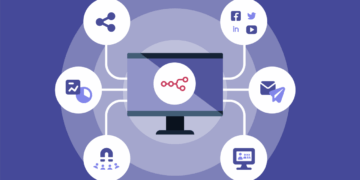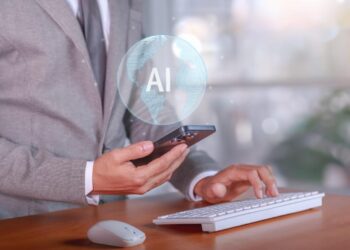The world of computing has long been governed by the classical bit—a fundamental unit of information existing in one of two states: 0 or 1.
This binary foundation has powered every technological leap, from the personal computer to the vast infrastructure of the internet.
However, humanity is now standing at the threshold of a revolutionary paradigm shift: Quantum Computing.
This emerging technology exploits the bizarre and powerful laws of quantum mechanics to perform calculations at speeds and scales that are utterly impossible for even the world’s most advanced supercomputers.
It promises to unlock solutions to problems currently considered intractable, redefining fields from medicine and materials science to finance and artificial intelligence.
Quantum Computing: A New Era is not just a technological upgrade; it is a fundamental transformation of our capacity to calculate and understand the universe.
While still in its nascent stages, quantum computing represents the ultimate long-tail SEO opportunity for publishers targeting high-value, research-intensive traffic
Understanding the core concepts and the potential applications of this technology is crucial for anyone seeking to be positioned as an authoritative source in the next generation of computing.
This comprehensive article delves into the core physics, the current limitations, and the profound implications of this breathtaking technology for the global economy and scientific endeavor.
A. The Fundamental Physics of Quantum Leap
To understand why a quantum computer is so much more powerful than a classical one, we must look beyond the binary bit and into the strange world of subatomic particles.
A. Qubits
The Quantum Bit: The quantum equivalent of the classical bit is the qubit (quantum bit). Unlike a bit, which must be either 0 or 1, a qubit can exist in a superposition of both states simultaneously.
B. Superposition
This principle allows a quantum computer with just a few hundred qubits to represent more states than there are atoms in the observable universe.
It means the computer can explore all possible outcomes of a complex problem concurrently, rather than sequentially.
C. Entanglement: The Quantum Link
Entanglement is a phenomenon where two or more qubits become linked, sharing the same fate regardless of the distance separating them.
D. Instantaneous Correlation
If one entangled qubit is measured and found to be “0,” its entangled partner instantaneously collapses to its corresponding state, even if they are light-years apart.
This correlation is what enables quantum computers to perform computations that link vast quantities of data simultaneously.
E. Interference: The Calculation Engine
Quantum computers perform calculations by exploiting quantum interference.
This process is used to amplify the probabilities of the desired computational outcomes while suppressing the probabilities of the incorrect ones.
F. Selective Amplification
By carefully manipulating the quantum state, the computer effectively guides the system toward the correct solution, using wave-like interference patterns to filter out unwanted noise and focus the computational power.
B. Why Classical Computers Fail Where Quantum Succeeds
Classical computers, no matter how fast or numerous, are fundamentally constrained by their architecture when tackling certain classes of problems.
1. The Barrier of Exponential Complexity
Many critical scientific problems involve an exponential number of possible variables and interactions.
These are called intractable problems because the time required for a classical computer to solve them grows exponentially with the size of the input.
A. Molecular Simulation
Simulating the exact quantum behavior of a single complex molecule (like caffeine) is impossible for a supercomputer because the number of necessary calculations exceeds its capacity.
A quantum computer, leveraging superposition, can simulate all possible electron configurations simultaneously.
B. Optimization Problems
Finding the absolute best solution for problems like logistics, vehicle routing (the Traveling Salesman Problem), or scheduling is an NP-hard challenge for classical systems.
Quantum algorithms can explore the entire solution space far more efficiently.
2. Key Quantum Algorithms and Their Power
The true advantage of quantum computing is realized through specialized algorithms designed to exploit quantum phenomena.
A. Shor’s Algorithm
Can factor large numbers exponentially faster than any classical algorithm.
If scaled, this would break the RSA public-key cryptography that secures the vast majority of current internet communications, necessitating a global shift to post-quantum cryptography.
B. Grover’s Algorithm
Offers a quadratic speedup for searching unsorted databases compared to the best classical search algorithms, dramatically improving efficiency for large-scale data retrieval.

C. Transformative Applications for the Global Economy
The ability to solve intractable problems will unlock massive value across high-stakes, high-CPC industries, making quantum computing the most valuable technological leap of the century.
1. Pharmaceuticals and Drug Discovery
Quantum simulation can precisely model how molecules interact.
A. Optimized Drug Design
Instead of relying on expensive and time-consuming physical laboratory experiments, researchers can simulate millions of drug-target interactions in silico to quickly identify the most promising candidates, accelerating the path from discovery to market.
B. Advanced Material Science
Designing new materials with specific, desired properties (e.g., highly efficient solar cells, room-temperature superconductors, or ultra-light, strong alloys) by simulating their atomic structures.
2. Financial Modeling and Optimization
The financial world is rife with complex optimization problems.
A. Portfolio Optimization
Quantum computers can model the correlations between thousands of assets and risk factors simultaneously to design the absolute optimal investment portfolio under various market conditions.
B. Fraud Detection and Risk Analysis
Developing far more sophisticated and real-time models for market risk assessment, credit scoring, and identifying complex, coordinated fraudulent activities.
3. Artificial Intelligence and Machine Learning
Quantum computing promises to accelerate the most demanding aspects of AI training.
A. Quantum Machine Learning (QML)
Utilizing quantum mechanics to enhance AI, allowing models to process massive, high-dimensional datasets exponentially faster, leading to more powerful and efficient deep learning algorithms.
B. Optimization of Neural Networks
Quantum techniques can be used to optimize the training parameters and structure of complex neural networks, accelerating the development of the next generation of General AI.
D. The Engineering and Cohere Challenges
Despite its theoretical power, quantum computing is currently constrained by significant engineering and coherence challenges, making the technology fragile and error-prone.
1. Decoherence: The Fragility of Qubits:
The fundamental challenge is decoherence, where the delicate quantum state (superposition or entanglement) is lost due to interaction with the external environment (heat, vibration, or electromagnetic noise).
A. Extreme Cooling Requirements
Many current quantum computers (using superconducting circuits) must operate at temperatures colder than deep space (near absolute zero, or around -273°C) to maintain qubit coherence, making them complex and expensive to operate.
B. Qubit Fidelity
Maintaining the accuracy and stability of the qubit state (fidelity) is paramount. Current error rates are high, meaning large quantum computers require massive error correction codes to ensure reliable computation.
2. Scaling and Connectivity
Building a quantum computer that is both large (many qubits) and highly connected (qubits can interact with many others) is a monumental engineering task.
A. The Noisy Intermediate-Scale Quantum (NISQ) Era
The current generation of quantum devices (50-100 noisy qubits) are powerful enough to be experimentally interesting but too noisy and limited in size to achieve true quantum advantage over classical systems for commercially useful problems.
3. Varied Qubit Technologies
There is no single consensus on the best way to build a qubit. Current research explores several competing physical platforms:
A. Superconducting Qubits (IBM, Google): Rely on cooled circuits.
B. Trapped Ion Qubits (IonQ): Use lasers to suspend and control individual charged atoms.
C. Photonic Qubits (Xanadu): Use light particles (photons) as the information carriers.

E. Preparing for the Quantum Future and Investment
The emergence of quantum computing is creating a technological arms race among nations and corporations, prompting massive investment and a critical focus on the quantum workforce.
1. Quantum-Safe Cryptography
Governments and financial institutions are urgently researching and implementing post-quantum cryptography (PQC) algorithms that can resist attacks from future scaled quantum computers. This migration is considered one of the most critical security challenges of the decade.
2. Developing the Quantum Workforce
There is a severe global shortage of researchers, engineers, and programmers proficient in quantum mechanics and quantum programming languages.
A. Education and Training
Universities and companies are creating specialized quantum information science degrees and industry training programs to bridge this critical talent gap.
B. Quantum Programming Languages
New programming environments (e.g., Qiskit from IBM, Cirq from Google) are emerging to allow programmers to write code that translates classical instructions into quantum gate operations.
3. The Quantum Cloud Ecosystem
Major tech providers are offering access to their quantum hardware via the cloud, allowing researchers and businesses worldwide to experiment with quantum algorithms without owning the massive, expensive hardware.
This democratization is accelerating development and lowering the barrier to entry.
Conclusion
In conclusion, Quantum Computing is poised to be the most disruptive technological force since the microchip.
While the challenges of decoherence and error correction are immense, the theoretical power to solve the world’s most complex problems—from climate modeling to personalized medicine—makes the endeavor non-negotiable.
As the technology moves from the NISQ era toward fault-tolerant quantum computers, the businesses and nations that have strategically invested in the quantum workforce and quantum-safe infrastructure will be the ones that define the next era of scientific and economic advancement.







